Ferrari 488 Pista Review, First Drive
It's fast, loud, soulful, and yet isn't too clinical. Yes, the Ferrari 488 Pista is one of the fastest V8's in the world, and so it definitely brings out the driver inside you and screams to triple-digit speeds without hesitation. Full review here.

Is a ‘regular’ Ferrari too tame for you? Do you normally get out of a 488 GTB yawning? If so, say hello to the Pista…
The car that you see here is the most powerful V8 in Ferrari’s history. And that’s saying something, considering that they’ve had their fair share of powerful V8s in the past. Arguably the first hypercar, the F40 of 1987 – the last Ferrari developed under the watch of Enzo Ferrari (or il Commendatore, as he was known), before his death in 1988 – had a 2.9 litre twin-turbo V8 that produced 478bhp. At the time, it was thought that cars would never get any faster. They thought wrong!
The 2003 360 Challenge Stradale had 420bhp, the 2007 F430 Scuderia: 500bhp, the 2013 458 Speciale: 600bhp, and now the 488 Pista – it’s 3.9-litre, twin-turbo V8 produces (wait for it) 711bhp and 770Nm of torque. That’s 50 horses and 10Nm more than the 488 GTB. Clearly, this is a car for those of you who normally get out of a 488 GTB yawning.
100km/h comes up in just 2.85 seconds – versus a ‘leisurely’ 3 seconds in the GTB! 200km/h comes up in a staggering 7.6 seconds. Needless to say, this car is nothing if it isn’t fast. Fitting, I suppose, since it does have the word ‘racetrack’ in its name. Pista means track in Italian in case you haven’t figured that out already.
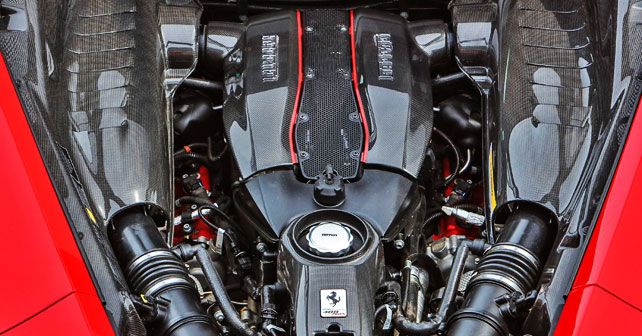
So, how did they do it?
Well, they started by shaving a full 90 kilograms off the GTB. 18kgs of that comes from the engine alone. Incredible amounts of inspiration have been taken from the 488 GTE and Ferrari Challenge race car – that’s the WEC (World Endurance Championship) racer and the Ferrari one-make series contender respectively.
Let’s start with the body. At the front, there’s a carbon fibre bonnet and bumper. It also has a lithium battery, like the GTE race car. You get the option of a set of carbon fibre rims. The level of detail is such, in fact, that there’s a special coating on the inside of the rims that was originally developed for the aerospace industry – in this case, it’s there to help dissipate the heat generated during braking.
At the rear, there’s a carbon fibre spoiler – a larger one than on the GTB – as well as a carbon fibre rear bumper and diffuser (another item swapped in from the GTE). In the engine bay, 50% of the components are new. Keep in mind that the 488 GTB motor has already won the International Engine of the Year award for the last two years running. This one, meanwhile, has recently claimed the 2018 crown.
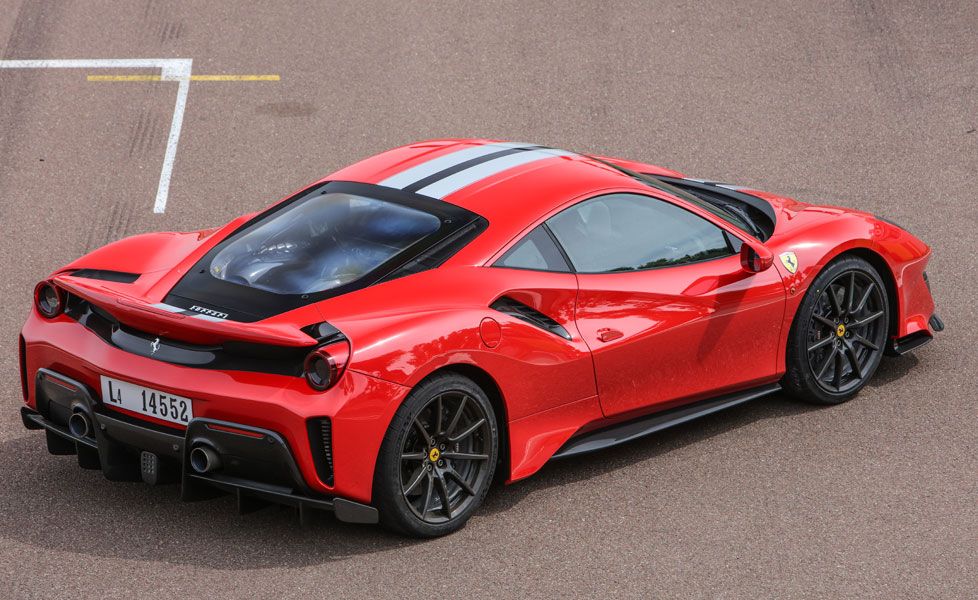
The air intakes for the engine have been moved from the flanks on either side of the car to the rear spoiler area, where the intake is directly connected to the plenums. The entire intake is more compact, thanks to a reduced plenum volume and shortened runner length. The con-rods are now titanium – like the race car – and the flywheel and crank have been lightened too. Not only does this mean lower weight and more power, but faster revs too. And boy are the revs fast!
The exhaust manifold is made of Inconel pipes, as opposed to cast iron in the GTB – another component swiped from the race car parts bin. Of course, this means that it’s lighter and unlocks more power, but it also means that it helps with the exhaust note. As one of the Ferrari engineers said, “we always want our engines to make a ‘sound,’ not a ‘noise.”

Turbo lag – what’s that?
The only sense that you get that this is a turbocharged engine is because you hear the turbos spooling up every now and then. Other than that, Ferrari’s variable torque management system ensures that this motor feels entirely like a naturally aspirated engine. That means you get continuously increasing acceleration in every gear. You reach max torque at 3,000rpm in top gear. You reach max power – i.e. all 711bhp worth – at the absolute redline of 8,000rpm. As a result, the power is constant – not to mention instant. And it just doesn’t taper off until you reach the redline. The revs build so unbelievably fast that I actually hit the redline while lapping the Ferrari test track at Fiorano – but more on that later. Suffice to say, you really do have to recalibrate your brain to keep up with the ferocity of this motor.
The only thing that can match the motor, fortunately, is the transmission. This dual-clutch 7-speed feels like the best gearbox ever made – plain and simple! It’s so responsive that it feels telepathic. You merely think about a gear change, and it’s there. And I absolutely love the massive paddles that are fixed to the steering column. It’s useful that they’re so accessible, because you find yourself using them a lot more than you would imagine. For the simple reason that, under hard acceleration, the motor revs so quickly that you’re constantly flicking the right paddle. While, under deceleration, it stops with even more urgency – so you find yourself hurriedly banging down the gears under heavy braking.
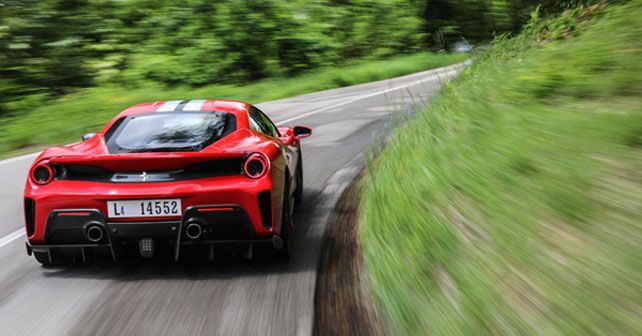
Stops as well as it goes
The brake booster has been borrowed – yup, you guessed it – from the 488 GTE racer. As a result of which, the brake pedal has quite limited travel and is very firm. But somehow, it’s progressive at the same time. And the levels of grip are so intense that it’s only really under hard braking that you get some sense of the sheer adhesion provided by the Michelin Pilot Sport Cup 2 tyres. Michelin spent two years developing these tyres with Ferrari. They’ve got massive tread block on the shoulders – making them look almost like semi-slicks. But Michelin insists that wet grip isn’t hampered, since they’ve also developed a brand-new compound for this tyre that ensures not only more grip but also most stability – better enabling the tyre to evacuate water when needed.
Well, we were about to put that theory to the test. After spending a couple of hours pootling through the small towns and villages around Maranello, not to mention racing through the switchbacks in the hills around the Ferrari factory, it was finally time to put the Pista where it belongs – on the track!

Wait, what about the aerodynamics?
We can’t get to what the Pista actually feels like on the track without mentioning the level of work that’s gone into the aero development. Just like tyres, this too is a black art – not only do you have to ensure extra downforce, but you also have to eliminate the additional drag that it generates in order to maintain overall aerodynamic efficiency. In addition to that, you also have to ensure good thermal management – for which airflow can play a vital role.
To start with, the defining feature of the Pista is its rather conspicuous S-duct in the front of the car. This is a Formula 1-derived, Ferrari patented technology that’s being used on a road car for the first time. Essentially, there’s a small front wing that creates a low-pressure area at the front of the car. This accelerates the air into a duct that then directs it to the top of the bonnet and over the front of the car – generating additional front downforce, with no penalty in terms of drag.
There are also two massive radiator openings on the front of the car. The radiators themselves are raked rearwards like they are in the 488 GTE race car – rather than placed front facing, as they are on the 488 GTB. This not only improves cooling efficiency by 10%, but also leads to power gains because the hot air from the radiators no longer interferes with the intercooler intakes on the flanks. In fact, believe it or not, 20% of the 50 horsepower increase comes from better thermal management.
At the back, the massive diffuser has three active flaps that stall the diffuser when the additional downforce isn’t needed – thereby limiting drag. At speeds of around 120km/h, or under load, the flaps activate the diffuser and create additional rear downforce.
But, how does this all work in practice?
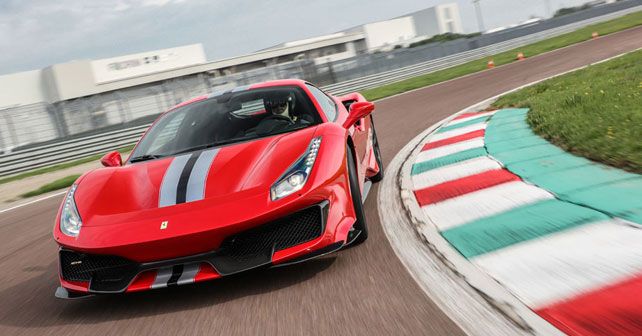
Finally, the track
We were to start with two laps around the circuit with Raffaele De Simone behind the wheel – Ferrari’s very unassuming official test driver. Now, I’ve been in plenty of fast cars with a lot of very quick drivers, but this was another level of intense. As Rafa hit the gas, it was as though my heart attempted to escape from my ribcage. Even though I had experienced it on the road, on the track, initially, everything takes you by surprise – the acceleration, the braking, and especially the lateral grip.
Rafa then attempted to demonstrate Ferrari’s latest party trick – Ferrari Dynamic Enhancer or FDE, as it’s called. With the Manettino set to CT-Off, FDE kicks in to make you look like a hero. Instead of behaving like a traditional electronic stability system that engages the minute it detects slip – either by cutting power, or by activating the brake, or both – and thereby slowing you down, FDE engages sooner and more progressively, allowing you to perform a heroic powerslide at the exit of corners without letting you know that it’s cut in at all. It’s almost like it modulates the throttle for you – enabling you to be as quick as possible while exiting corners. Of course, if your inputs are especially ham-fisted or abrupt, it’ll cut in just as abruptly to ensure that you don’t overcook it.
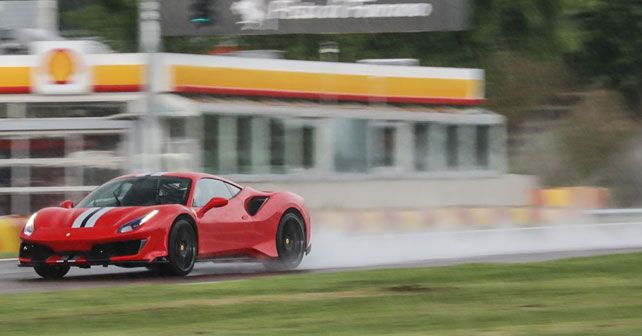
But, what about in the wet?
Right, Rafa’s impressive demo over – it was finally my turn! Except, nature was lying in wait too. As we got out of the car, it was as though the clouds had really sprung into action. Rafa – suddenly in a very Zen-like state – put his hand out, and after a few meditative moments declared that we had no more than ten minutes before the rain came. As it turned out, he was bang on the money. The downpour began, literally, as I strapped myself into the driver’s seat.
So, with a big gulp, and with the wipers on their fastest setting, I headed out – full of trepidation – with the Michelin engineer’s words ringing in my ears. I was hoping against hope that he was right, and that wet grip wasn’t compromised. By the time I completed my sighting lap, it was as though we were in the middle of a tropical storm – I kid you not!
The first half of the circuit wasn’t too wet fortunately. Nevertheless, I stayed off the kerbs and the white lines, which tend to be the most slippery in the rain. Slowly, I built up my confidence – until I got to the second half of the lap that is. I missed the apex at the hairpin, and, as I tried to power out, found myself aquaplaning in a straight line – the track was now literally under water. As I got back onto the main straight and attempted to put the power down, the Michelins – new compound and all – were utterly helpless.
The back end snapped. I gave it a full dose of opposite lock in the hope of straightening it out again. As I waited for the back end to come swinging back the right way, I was preparing to catch it from becoming a proper tank slapper, when the electronics kicked in and simply straightened out the car like nothing had ever happened. Needless to say, I was amazed and relieved in equal measure. The next lap too, I was struggling to put the power down in a straight line. Eventually, I thought better of it and called it quits – hoping that the rain would let up sooner rather than later.

Sun shines again
Fortunately, it did. And I did get my two laps in the dry. And what a set of laps they were. Of course, after my previous outing, there was still a bit of trepidation. So, I was cautious. But not so much that I couldn’t revel in the speed, grip and composure of this incredible machine.
One of Ferrari’s aims was to make this car approachable at the limit – make it easy to drive and fun to push to its extremes. Well, I can safely say that they’ve achieved this objective. Speed is a simply a non-issue in this machine. It’s just there – anytime you want it. But what’s also there is a predictability and composure that very few machines possess at the limit.
This really does feel like a special edition, like a race car for the road. But it’s refined and usable at the same. Sure, they’ve even removed the glovebox to save weight, and they’ve put in washboard-hard seats and four-point harnesses to hold you in place on the tack, but, at the same time, it’s very enjoyable on the road as well.

If I’ve complained, in the past, that modern supercars have become too clinical, I take it all back. Sure, this is clinical, but it’s just so fast that it’s worth it. Plus, it doesn’t isolate you and do everything for you. It works with you, it flatters you. More importantly, it allows you to play with it – and to approach its limits without hesitation. It truly is the forbidden fruit. Once you’ve tasted it, there’s simply no going back.
Frankly, I can’t imagine how a car could be better engineered than this. Is this the best car I’ve ever driven? At the risk of making that claim because the adrenalin is still gushing through my veins, I would have to say so.
There’s nothing more to say, then, is there? Except that it’ll be priced at 4.91 crores when it’s launched in November this year. So, you better start saving… or plotting, or whatever it is that you need to do to own one, because this could well be the pinnacle of the motor car as we know it!
Engine: 3,902cc / 32-valves / V8 / twin-turbo
Fuel: Petrol
Transmission: 7-speed dual-clutch / Rear-wheel drive
Power: 711bhp @ 8,000rpm
Torque: 770Nm @ 3,000rpm
Acceleration: 0-100km/h – 2.85 seconds
Price: Rs 4.91 crore (ex-showroom
X-factor: The latest in a long line of very special V8 Ferraris. The ultimate race car for the road in the world at present.
| Pros • Sensational performance • Incredibly engineered • Extremely refined | Cons • Will only be experienced by a select few |
Ferrari 488


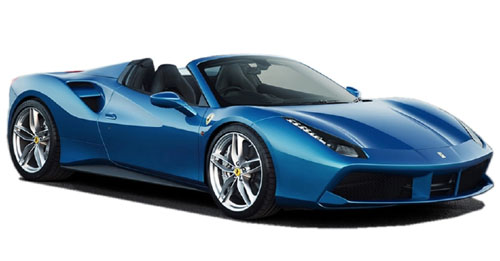
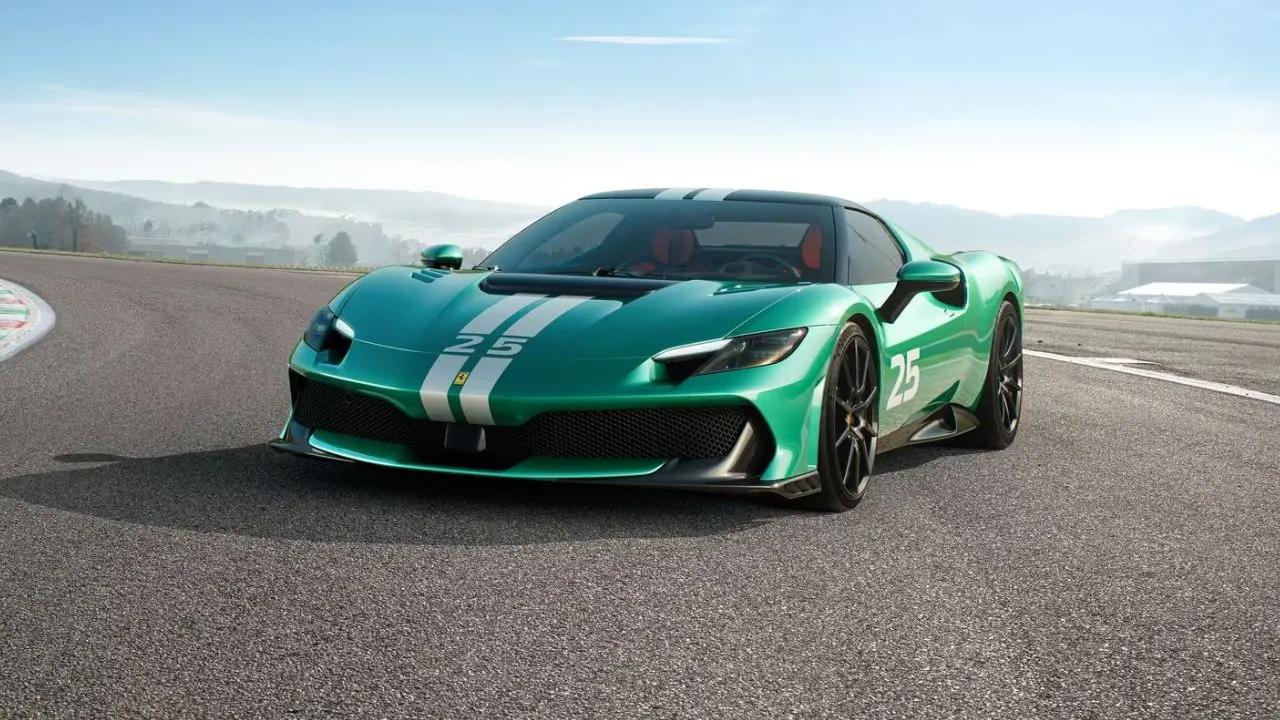
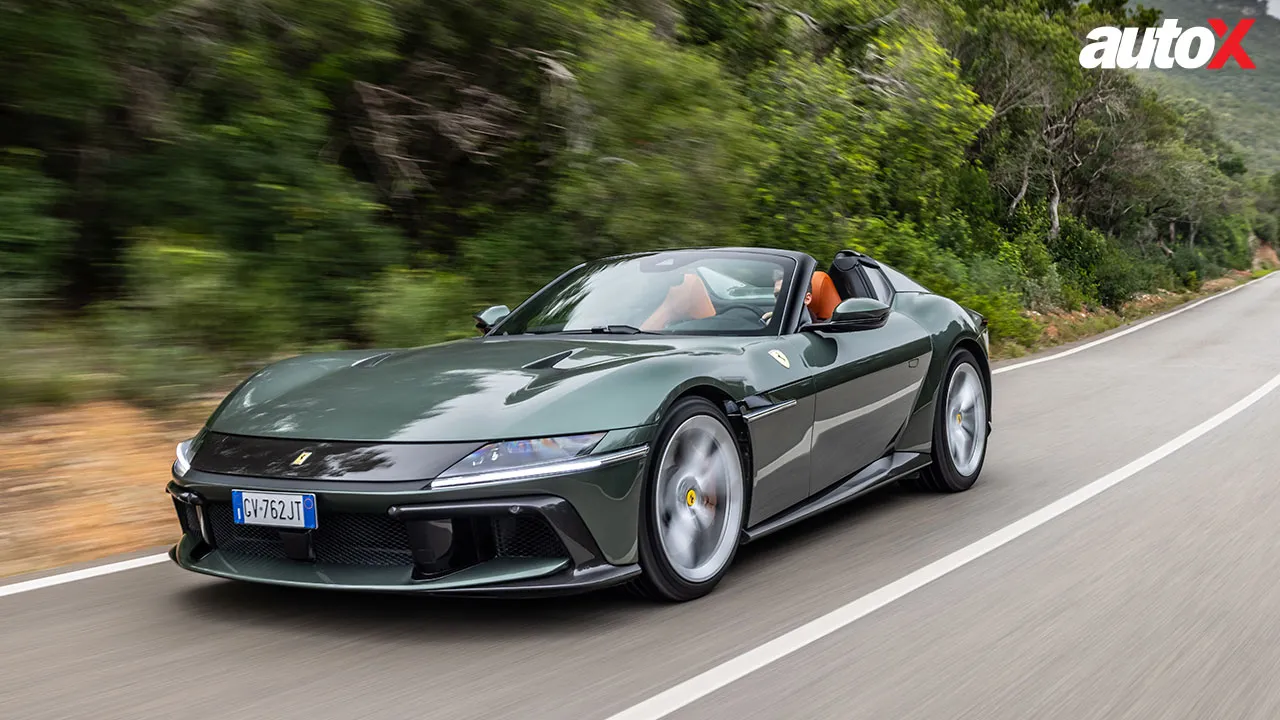
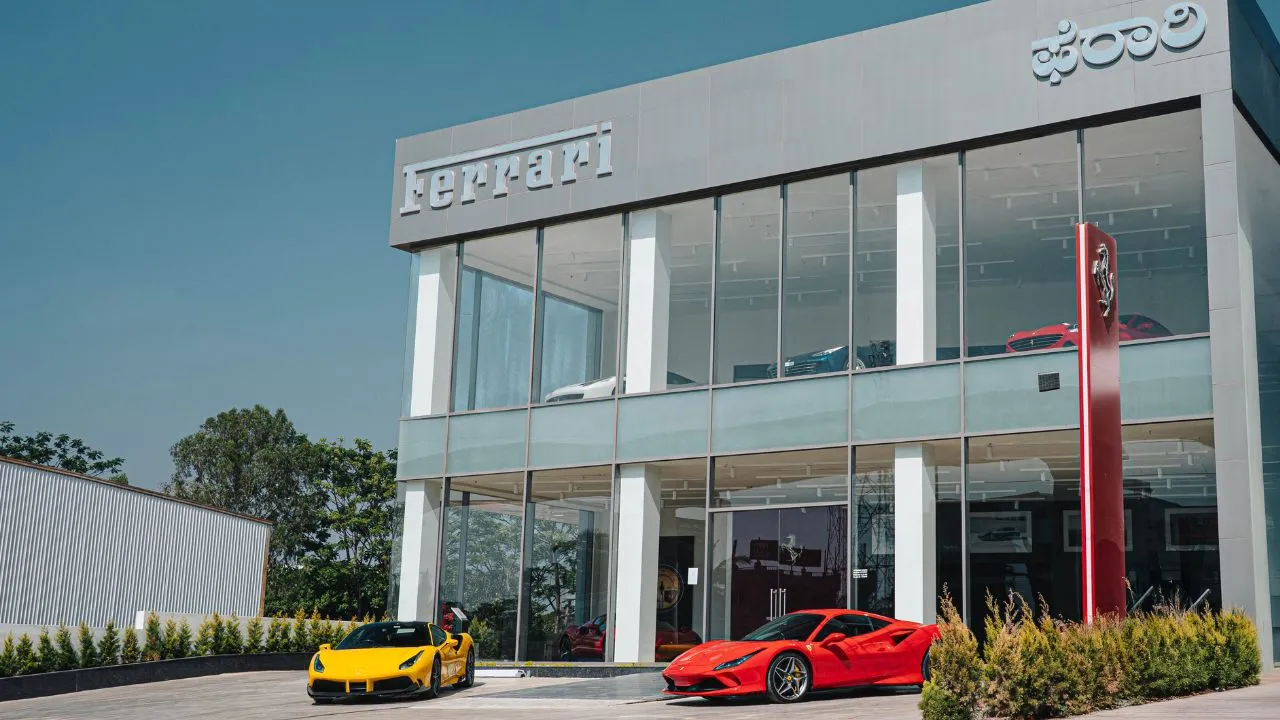


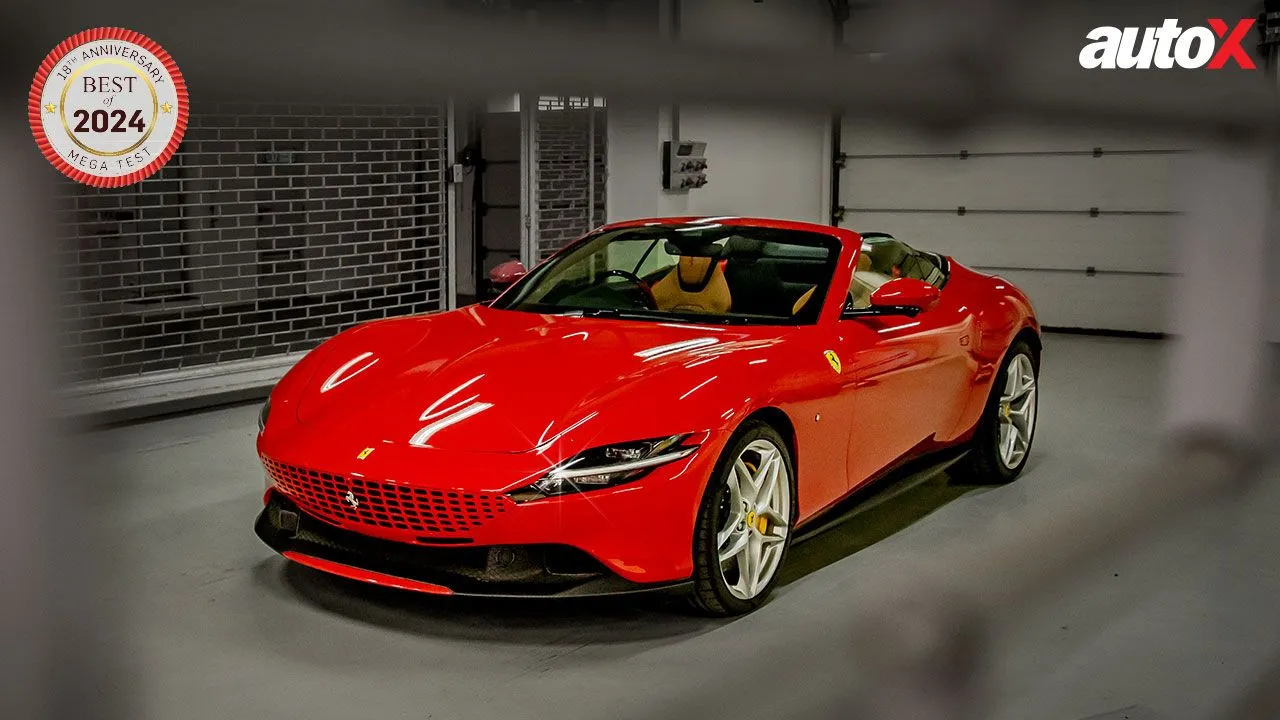
Write your Comment on